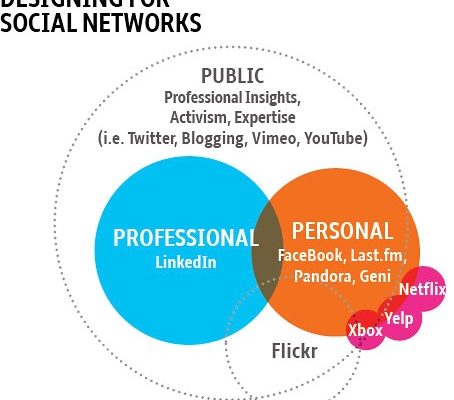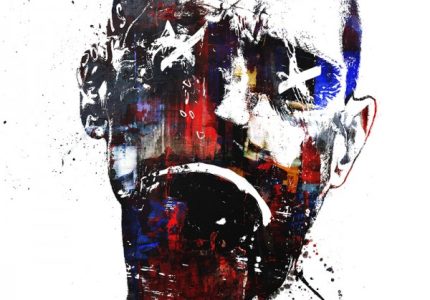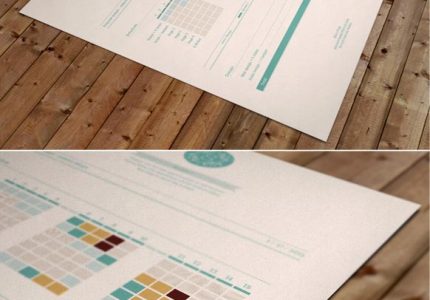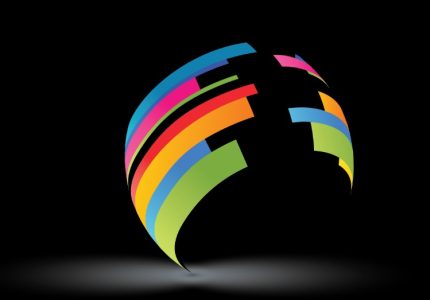Overview of Graphic Design Careers
Graphic design careers offer exciting opportunities for creative individuals to bring visual ideas to life and communicate messages effectively. This field combines art, technology, and marketing to produce engaging visual content for various industries. Whether working independently or within a team, graphic designers play a vital role in shaping brand identities, advertising campaigns, and digital media. Exploring a career in graphic design can lead to diverse paths and professional growth in a dynamic and innovative industry.
Definition and Scope of Graphic Design
Graphic design careers encompass a wide range of opportunities for creative professionals who use visual elements to communicate messages effectively. This field involves the creation of visual content for various media, including print, digital, advertising, and branding, making it a vital component of marketing and communication strategies.
The definition of graphic design pertains to the art and practice of planning and projecting ideas and experiences with visual and textual content. It combines typography, imagery, color, and layout to craft visually appealing and understandable messages. The scope of graphic design is broad, covering areas such as branding, web design, illustration, packaging, and user interface design, among others. As technology evolves, the field continues to expand, offering numerous career paths for those talented in creative thinking and visual communication.
Role of a Graphic Designer in Various Industries
Graphic design careers offer diverse opportunities across multiple industries, allowing professionals to apply their creativity and technical skills in various contexts. From advertising and marketing to fashion, technology, and entertainment, graphic designers play a crucial role in visual communication. They develop visual concepts, create layouts, and produce designs that effectively convey messages and engage audiences.
In the advertising industry, graphic designers craft compelling advertisements, branding materials, and promotional content that drive consumer engagement. Within the fashion industry, they develop clothing graphics, logos, and promotional visuals that establish a brand identity. In the tech sector, designers create user interfaces, app visuals, and website layouts optimized for user experience. The entertainment industry benefits from graphic designers creating movie posters, album covers, and visual effects that enhance storytelling and audience appeal.
Overall, graphic designers are essential in shaping brand identities, enhancing user experiences, and communicating ideas visually across a wide range of industries. Their skills are adaptable and highly valued in today’s visually driven world, making this a dynamic and rewarding career path.
Educational and Skill Requirements
Entering a career in graphic design requires a solid foundation of educational background and specialized skills. A combination of formal education and practical experience helps aspiring designers develop their creativity, technical proficiency, and understanding of industry standards. Through continuous learning and skill development, individuals can position themselves for success in this dynamic and competitive field.
Recommended Degrees and Certifications
To pursue a career in graphic design, a strong foundation in visual communication and creative skills is essential. A relevant educational background helps develop proficiency in design principles, typography, color theory, and digital tools essential for the field.
Typically, a bachelor’s degree in graphic design, visual arts, or a related field is recommended. Coursework often includes computer-aided design (CAD), illustration, photography, and multimedia arts, providing a comprehensive understanding of design processes and techniques.

Certifications such as Adobe Certified Expert (ACE), Adobe Certified Associate (ACA), or other industry-recognized credentials can enhance a designer’s credibility and demonstrate expertise in specific software like Adobe Photoshop, Illustrator, and InDesign. Continuing education through workshops and online courses can also help designers stay current with evolving technologies and trends in the industry.
Core Skills and Software Proficiency
In graphic design careers, possessing the right educational background and skill set is essential for success. Candidates typically need formal education in graphic design, visual arts, or related fields, often at least a bachelor’s degree, to develop foundational knowledge and technical abilities.

Core skills required for graphic designers include creativity, strong visual communication, attention to detail, and the ability to interpret client needs. Good time management and teamwork are also vital, as projects frequently involve collaboration and tight deadlines.
Proficiency in relevant software tools is crucial for efficient workflow. Key software skills include:
- Adobe Photoshop
- Adobe Illustrator
- Adobe InDesign
- Sketch
- Figma
- CorelDRAW
Essential Creative and Technical Abilities
Successful careers in graphic design require a strong foundation in both educational and skill-based qualifications. A formal degree in graphic design, visual arts, or related fields is often preferred, providing essential knowledge of design principles, typography, color theory, and software proficiency. Additionally, developing essential creative abilities such as creativity, innovation, and a keen eye for aesthetics are vital for producing compelling visual content. Technical skills in industry-standard design software like Adobe Photoshop, Illustrator, and InDesign are crucial for executing digital designs efficiently. Strong communication skills, attention to detail, and the ability to work under deadlines also play a significant role in career progression. Continual learning and adaptability to new tools and trends are essential to maintain relevancy and excel in the dynamic field of graphic design.
Specializations within Graphic Design
Graphic design is a diverse and dynamic field with many specializations that cater to different interests and skill sets. From branding and advertising to user interface and motion graphics, each specialization offers unique opportunities to express creativity and impact audiences. Exploring these areas can help aspiring designers find their niche and build a successful career in the competitive world of graphic design.
Branding and Identity Design
Specializations within graphic design, branding, and identity design offer a diverse range of career paths, each focusing on different aspects of visual communication and brand representation. These fields allow designers to develop expertise and create impactful visual solutions for various clients and industries.
- Logo and Brand Identity Design: Creating visual symbols and comprehensive brand identities that represent a company’s core values and personality.
- Packaging Design: Developing product packaging that attracts consumers and communicates brand messages effectively.
- Web and User Interface Design: Designing visually appealing and user-friendly websites and applications to enhance digital engagement.
- Corporate Design: Establishing consistent visual styles across all corporate materials, including reports, presentations, and marketing collateral.
- Advertising and Campaign Design: Crafting eye-catching advertisements for print, digital, and broadcast media to promote products and services.
- Illustration and Infographics: Using custom illustrations and data visualizations to communicate complex information creatively and clearly.
- Environmental and Experiential Design: Designing visual elements for physical spaces like signage, exhibition displays, and retail environments.
- Typography Specialization: Focusing on the art and technique of arranging type to improve readability and aesthetic appeal in various mediums.
Web and User Interface (UI) Design
Specializations within graphic design, web, and user interface (UI) design offer diverse career paths for creative professionals. Graphic design encompasses branding, print media, packaging, and advertising, allowing designers to craft visual identities and marketing materials. Web design focuses on creating visually appealing and functional websites, combining aesthetics with usability. User Interface Design, a subset of UX, centers on designing intuitive interfaces for apps and digital products, enhancing user experience through layout, interactions, and visual elements. Exploring these specializations enables designers to develop expertise tailored to specific industries or digital platforms, leading to versatile and rewarding careers in the creative field.
Print and Editorial Design
Graphic design careers encompass a wide range of specializations that focus on different aspects of visual communication. Within this field, print design involves creating materials such as brochures, posters, business cards, and packaging that are physically produced. Editorial design, on the other hand, concentrates on designing layouts for magazines, newspapers, books, and online publications to ensure readability and visual appeal. Professionals may also specialize in branding, digital media, user interface design, animation, or visual identity, allowing them to target specific industries or client needs while honing their skills in particular areas of expertise.
Packaging and Product Design
Specializations within graphic design, packaging, and product design offer diverse career paths for creative professionals seeking to focus on specific industries or skills. In graphic design, specialists may work in branding, advertising, digital media, or editorial design, honing their expertise to create compelling visuals for various platforms. Packaging design focuses on developing attractive and functional packaging solutions that enhance product appeal, requiring knowledge of materials, printing processes, and consumer psychology. Product design involves creating innovative and user-friendly products, blending aesthetics with functionality, often requiring skills in ergonomics, engineering, and user experience. These specializations allow designers to build targeted portfolios and deepen their expertise in distinct areas of the visual arts, contributing to varied and dynamic careers within the design industry.
Motion Graphics and Animation
Specializations within graphic design, motion graphics, and animation offer a variety of career paths for creative professionals. Each area allows designers to focus on different aspects of visual communication, animation, and multimedia, catering to diverse industries and project needs.
- Brand Identity Design: Developing logos, color schemes, and visual styles that define a company’s image.
- Typography: Crafting the visual presentation of text to enhance readability and aesthetic appeal.
- Print Design: Creating layouts for magazines, brochures, posters, and packaging.
- Web and UI Design: Designing user interfaces and experiences for websites and mobile applications.
- Motion Graphics: Producing animated visuals for advertising, film, television, and online content.
- 2D and 3D Animation: Developing character animations, visual effects, and immersive environments for entertainment and marketing.
- Environmental Design: Creating visual concepts for exhibitions, events, and physical spaces.
- Illustration: Producing custom artwork to complement various design projects.
- Visual Effects (VFX): Adding effects to enhance videos and films, integrating CGI and live-action footage.
- Game Design and Animation: Designing characters, environments, and interactive elements for video games.
Career Paths and Job Opportunities
Exploring career paths and job opportunities in graphic design opens up a world of creative possibilities for aspiring artists. This dynamic field offers diverse roles, from branding and advertising to digital media and user experience design. With the demand for visually compelling content continuously growing, graphic design careers provide exciting prospects for professional growth and creative expression.
Entry-Level Positions
Starting a career in graphic design offers a variety of exciting opportunities for aspiring professionals. Entry-level positions such as junior graphic designer, design assistant, and production artist provide valuable experience and exposure to the industry. These roles often involve assisting senior designers, working on small projects, and learning the fundamentals of design software and principles. As individuals develop their skills and build a portfolio, they can pursue more advanced positions like graphic designer, art director, or creative director. The growth potential in graphic design allows for specialization in areas such as branding, advertising, digital media, and user experience design, opening pathways to diverse career opportunities.
Mid-Level and Senior Roles
Graphic design careers offer a diverse range of opportunities for professionals seeking growth and specialization. Starting from entry-level positions, individuals can advance to mid-level roles such as senior designer, art director, or brand strategist, where they take on more complex projects and leadership responsibilities. As they gain experience, many venture into senior roles like creative director or design manager, overseeing teams, shaping brand identities, and driving strategic initiatives. These career paths not only involve creative development but also open doors to opportunities in advertising agencies, corporate marketing departments, design consultancies, and freelance entrepreneurship. Continual skill enhancement and portfolio expansion are essential for progressing through these stages and securing high-level positions with increased influence and compensation.
Freelance and Consulting Opportunities
Graphic design offers diverse career paths and numerous job opportunities for creative professionals. Whether you aim to work in a corporate environment, a design agency, or as an independent freelancer, the field provides ample options to explore your interests and talents.
- In-House Designer: Working within a company’s internal marketing or branding team to develop visual content.
- Creative Agency Designer: Collaborating with teams to craft branding, advertising, and multimedia projects for clients.
- Freelance Graphic Designer: Providing services independently to a variety of clients, offering flexibility and diverse projects.
- Illustrator or Visual Artist: Creating artwork for books, magazines, advertising, or digital media.
- UX/UI Designer: Specializing in user experience and interface design for websites and mobile applications.
- Consultant: Advising organizations on branding strategies, visual identity, and design optimization.
- Building a personal brand and online portfolio to attract clients and employers.
- Networking within the industry to discover new job opportunities and collaborations.
- Continuing education and skill development to stay current with design tools and trends.
- Offering specialized consulting services in niches such as branding, packaging, or digital media.
- Participating in design competitions and exhibitions to showcase work and gain recognition.
Work Environment and Industry Sectors
The work environment and industry sectors play a crucial role in shaping a successful graphic design career. Graphic designers can find opportunities across various industries, each offering unique creative challenges and workplace settings. Understanding the different work environments and industry sectors helps aspiring designers make informed career choices and adapt to diverse professional landscapes.
Corporate and Agency Settings
Graphic design careers typically thrive within diverse work environments and industry sectors, ranging from corporate offices to creative agencies. In corporate settings, designers often work on branding, marketing materials, and digital content to support business objectives, emphasizing consistency and brand identity. Agency settings, on the other hand, provide a dynamic environment where designers collaborate with multiple clients on varied projects, fostering versatility and innovation. These industries span advertising, media, publishing, technology, and entertainment, offering broad opportunities for specialization. Whether in-house or agency-based, professionals must adapt to fast-paced workflows and evolving design trends, making adaptability and communication essential skills in this field.
Startups and Small Businesses
Working in graphic design offers a dynamic environment that fosters creativity and innovation, often within vibrant industry sectors such as advertising, fashion, entertainment, and technology. Startups and small businesses provide unique opportunities for graphic designers to take on diverse roles, exert more influence on brand identity, and experience a flexible, collaborative work culture. These environments encourage experimentation and rapid growth, making them ideal for emerging designers looking to build a varied portfolio and develop versatile skills. Whether employed within established companies or pioneering new ventures, graphic designers in these sectors play a crucial role in shaping visual narratives and engaging audiences across multiple platforms.
Nonprofit and Educational Institutions
Graphic design careers in nonprofit and educational institutions offer unique opportunities to make a meaningful impact through visual communication. Professionals in this sector often work on campaigns that promote social causes, raise awareness, or enhance educational programs, allowing designers to contribute to important community initiatives. The work environment tends to be collaborative and purpose-driven, fostering close teamwork with staff members dedicated to shared missions. Industry sectors such as nonprofits and education typically value creativity, innovation, and efficient use of resources, encouraging graphic designers to develop versatile and compelling visual content. These roles can provide a fulfilling career path for those passionate about leveraging design skills for positive societal change.
Building a Portfolio and Personal Brand
Building a strong portfolio and personal brand is essential for anyone pursuing a career in graphic design. These elements showcase your skills, creativity, and unique style to potential clients and employers, helping you stand out in a competitive industry. Establishing a compelling portfolio and a recognizable personal brand can open doors to exciting opportunities and foster professional growth in the dynamic world of graphic design.
Showcasing Work Effectively
Building a strong portfolio and personal brand is essential for success in graphic design careers. Your portfolio should showcase a diverse range of your best work, highlighting your skills, creativity, and unique style. Use high-quality images and provide brief descriptions to explain the context and your process behind each project. A well-organized and visually appealing portfolio not only attracts potential clients or employers but also demonstrates professionalism. Developing a personal brand involves establishing a consistent visual identity, including your logo, color scheme, and tone of voice, which helps you stand out in a crowded market. Engaging actively on social media, sharing your work, and connecting with the design community can also enhance your reputation and visibility. Remember, effective showcasing of your work and a strong personal brand are key to opening new opportunities and advancing your graphic design career.
Networking and Industry Engagement
Building a strong portfolio and personal brand is essential for success in the graphic design industry. A well-curated portfolio showcases your skills, creativity, and versatility, making a lasting impression on potential clients and employers. Coupling this with a distinctive personal brand helps you stand out in a competitive market, highlighting your unique style and approach. Consistently updating your portfolio and maintaining a cohesive online presence ensures continued growth and visibility in the industry.
Networking and industry engagement play a crucial role in advancing a graphic design career. Attending design conferences, workshops, and local meetups allows you to connect with peers, mentors, and industry leaders. Participating in online communities and social media platforms provides opportunities to share your work, gain feedback, and stay informed about trends and job openings. Building genuine relationships and actively engaging in the design community can lead to collaborations, referrals, and new career opportunities that accelerate your professional growth.
Salary Expectations and Job Market Trends
Understanding salary expectations and job market trends is essential for aspiring and current graphic designers looking to navigate their careers effectively. As the creative industry evolves, various factors influence earning potential and employment opportunities, including technological advancements, industry demand, and geographical location. Staying informed about these trends helps professionals make strategic decisions and position themselves for success in a competitive job market.
Average Salaries by Experience Level
Understanding salary expectations and job market trends is essential for aspiring and experienced graphic designers to navigate their careers effectively. As the demand for digital media and branding continues to grow, many professionals are redefining their earning potential based on experience and skill set.
- Entry-level graphic designers typically earn between $40,000 and $55,000 annually, with salaries increasing as they gain experience and build their portfolios.
- Mid-level designers with 3-5 years of experience can expect salaries ranging from $55,000 to $75,000, often supplemented by freelance projects and commissions.
- Senior graphic designers and creative directors with over 5 years of experience may see salaries exceeding $80,000, especially in large agencies or corporate settings.
Current job market trends indicate a steady growth in demand for versatile graphic designers skilled in digital, motion graphics, UX/UI, and branding design. The industry is increasingly competitive, but those who continually update their skills and adapt to new technologies often find higher earning opportunities and job stability.
freelance versus Inhouse Compensation
When considering a career in graphic design, understanding salary expectations and job market trends is crucial. Freelance graphic designers often have the flexibility to set their own rates, but their income can vary significantly based on project complexity, client base, and experience. In contrast, inhouse designers typically receive a stable salary, benefits, and consistent workload, which can be advantageous for long-term financial planning. The demand for graphic design skills remains strong, driven by digital marketing, branding needs, and online content creation. Currently, freelance work offers high earning potential for established professionals, yet inhouse positions often provide more security and steady growth opportunities. As the industry evolves, staying updated on market trends and honing a diverse skill set can help designers maximize their earning potential regardless of the work arrangement.
Future Job Market Outlook
Understanding salary expectations and job market trends is essential for aspiring and current graphic designers to navigate their careers effectively. The future job market outlook also provides valuable insights into potential opportunities and challenges within the industry.
- Salary expectations for graphic designers vary depending on experience, location, and specialization, with entry-level roles often starting around $40,000 annually and experienced designers earning over $85,000 in high-demand markets.
- The demand for skilled graphic designers continues to grow, fueled by digital media, branding needs, and the expansion of online platforms.
- Emerging trends include increased opportunities in user experience (UX) and user interface (UI) design, animation, and motion graphics, which can influence salary ranges and job prospects.
- Remote work has expanded the job market, allowing graphic designers to access a broader range of opportunities globally.
- Job market competition remains stiff, but specialization and staying updated with latest design tools and trends can give candidates a competitive edge.
- Future projections indicate steady growth in graphic design roles, especially for those adept in digital and multimedia content creation.
- The integration of artificial intelligence and automation may change certain aspects of the profession, emphasizing the need for adaptability and continual learning.
- Opportunities are expected to increase in sectors such as advertising, gaming, mobile app development, and e-commerce platforms.
- Freelance and contract work are becoming more prevalent, providing flexibility but also requiring self-management and entrepreneurial skills.
- Overall, a proactive approach to skill development and industry understanding will be key for success in the evolving graphic design landscape.
Continuing Education and Professional Development
Continuing Education and Professional Development are essential components for success in the ever-evolving field of graphic design. As technology advances and industry trends shift, staying current through courses, workshops, and ongoing learning opportunities helps designers enhance their skills, expand their portfolios, and stay competitive. Embracing lifelong learning ensures that graphic designers can adapt to new tools and techniques, ultimately fostering creativity and professional growth in their careers.
Workshops, Courses, and Certifications
Continuing education and professional development are essential for thriving in a graphic design career, enabling designers to stay current with industry trends and advanced techniques. Participating in workshops, courses, and obtaining certifications can significantly enhance a designer’s skill set and credibility. Workshops offer hands-on experience and networking opportunities, allowing designers to learn new software or innovative design methods. Structured courses, whether online or in-person, provide comprehensive knowledge on diverse topics like typography, branding, or user experience design. Certifications from reputable organizations validate a designer’s expertise and commitment to their craft, often leading to better job prospects and freelance opportunities. Ongoing learning not only improves technical abilities but also fosters creativity and adaptability in a rapidly evolving industry.
Staying Updated with Design Trends
Continuing education and professional development are essential for graphic designers aiming to stay competitive and innovative in their careers. Engaging in workshops, online courses, and industry seminars allows designers to refine their skills and learn new tools and techniques that keep their work fresh and relevant.
Staying updated with the latest design trends is crucial for creating visually appealing and current projects. Regularly exploring design blogs, attending conferences, and following influential designers on social media helps graphic designers identify emerging styles, color schemes, and user experience strategies. Incorporating these trends thoughtfully can elevate their work and meet the evolving expectations of clients and audiences.
By committing to lifelong learning and trend awareness, graphic designers can enhance their creative portfolios, increase their marketability, and ensure their careers remain dynamic and rewarding in a constantly changing industry.
Joining Professional Organizations
Continuing education and professional development are essential for graphic designers to stay current with evolving trends, tools, and techniques in the industry. Engaging in workshops, online courses, and seminars helps designers enhance their skills and maintain a competitive edge. Additionally, joining professional organizations such as the AIGA or the Graphic Artists Guild provides valuable networking opportunities, industry resources, and access to exclusive events. These organizations also often offer mentorship programs and certifications that can bolster a designer’s credibility and career growth. Committing to ongoing learning and actively participating in professional communities ensures graphic designers remain innovative and recognized within the dynamic field of graphic design.





